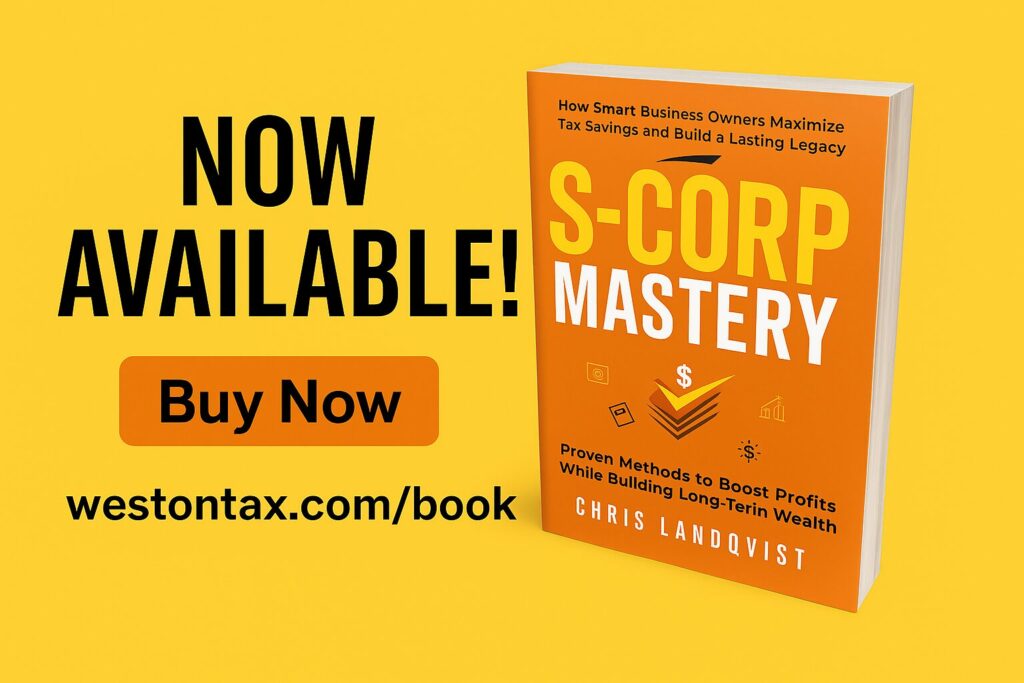This week we are not talking about Sole Props, LLCs, S-Corps, or Partnerships. But rather, I’m changing things up in today’s article. Here is what happened…
A few weeks ago, a client sent me an article from CNBC with the title: “Here’s the income it takes to be in the top 5% in your state”. If you want to read the article, you can find it HERE.
He was doing well for himself. Earning close to $800,000 per year — and asked a pretty straightforward question:
“If I’m in the top 5%, why doesn’t my life feel like it?”
That email (and conversation) sparked this article.
Because the truth is, most people don’t feel wealthy even when the numbers say they are. They’re told the good life is reserved for private islands, jets, and penthouses — but the smart ones know that how you spend is just as important as how much you make.
Today, I want to show you how you can live like the elite — with roughly a $500,000 income — by spending more intentionally. Not recklessly. Not frugally. But wisely, using the same principles that high-net-worth families and business owners use every day.
Let’s start where it hurts the most: housing.
Home Base: Owning in the Right Place, the Right Way
Housing is one of the biggest line items for high earners — and it should be. After all, your home is not just your sanctuary, it’s often your most public expression of success.
But depending on where you live, $500,000 doesn’t stretch as far as it used to. In places like New York City or Hawaii, you could easily spend $100,000/month just renting a penthouse with views. That’s $1.2 million a year… gone, with no equity to show for it.
Now, let’s talk ownership. Suppose you buy a $4 Million home in a desirable market like South Florida, Austin (TX), or Scottsdale (AZ). With 20% down, your mortgage, insurance, and taxes could range from $22,000 to $28,000/month. That’s $264,000 to $336,000 annually. Sure, that makes a massive dent in your budget… but there might be a reason for it.
Here’s the upside: every payment is building equity, and the long-term appreciation of trophy properties — especially in low-tax states — often outpaces traditional markets. For business owners, this home can also be partially leveraged in your broader planning strategies (which we’ll talk more about in another article).
In short: You can absolutely live in a luxurious, modern estate and still have money left over. If the property is structured correctly and fits your long-term plans.
Food Fit for a Family — Or a King
Most people think luxury eating means dining out five nights a week at white-tablecloth restaurants. But that adds up fast — especially for a family of four.
Let’s do the math.
Dining out at a high-end restaurant costs around $400–$600 per meal. Multiply that by five nights a week, and you’re burning through $10,000–$12,000 per month, or $120,000–$140,000 per year. And that’s not including lunch, groceries, or tips.
Now imagine this setup instead:
- You hire a private chef to prepare fresh meals at home four to five days a week: ~$6,000/month
- You still enjoy 2–3 upscale restaurant nights per week: ~$4,000/month
- You stock your home with premium groceries and wines: ~$2,000/month
That totals $12,000/month or $144,000/year — and gives you better quality food, greater convenience, and personalized nutrition. Bonus points if you enjoy cooking yourself… then you could easily trim $30,000–$50,000 from that total.
Living (and eating) well doesn’t mean overspending. It means spending consciously.
Transportation: Luxury on Four Wheels — For Half the Price
One of the easiest ways to feel “rich” is to drive something that turns heads. Rolls-Royce. Lamborghini. Bentley.
But buying these cars brand new is often a waste of capital.
A brand-new Lamborghini can set you back $400,000. But the moment you drive it off the lot? It drops in value. However, a 2-year-old model with low mileage can often be found for 40–50% less. That’s a $200,000–$220,000 savings with nearly the same driving experience.
Better yet, if you’re only planning to drive the vehicle for a year or two, consider leasing through a boutique luxury dealership. Many offer competitive monthly payments and maintenance packages that keep your costs predictable.
Let’s call it $5,000–$6,000/month for the right exotic car. That’s $60,000–$72,000 annually — a small fraction of your $500K income.
Drive the car. Enjoy the ride. Skip the depreciation cliff.
OR — drive a Camry… the choice is yours. Most people, who are not car enthusiasts, all agree that the emotional benefit of the “luxury” car wears off really quick. Then, they are stuck with the massive payment until they change into something more sensible.
Travel in Style: No Jet Needed
Let’s talk air travel.
Owning a jet is a financial sinkhole unless you’re flying ~200+ hours a year. The maintenance, crew, insurance, and storage costs can easily set you back $1-2 Million annually.
Instead, smart high earners tap into private charters or participate in a fractional jet ownership programs.
- A round-trip private flight (4 hours total) now runs $7,000/hour
- Flying private 3–4 times a year? Expect $84,000–$115,000/year
Still want to save? Fly first-class. Book early. Use credit card points. Or mix private and commercial based on occasion. Many of my clients fly commercial for business and save private for special family trips or international travel.
There’s no shame in being strategic. The only thing worse than flying commercial? Flying private and worrying how you’ll afford it next month.
Style, Accessories & Smart Indulgences
Looking the part is part of the game — but it doesn’t have to cost a fortune.
When you buy quality pieces that retain their value, you’re not just spending… you’re allocating. That may sound like a stretch when we’re talking about clothes, but certain items genuinely hold their worth.
Take watches. A stainless steel Rolex Daytona or Patek Philippe Aquanaut isn’t just a timepiece. It’s a long-term asset. These items are often sold above retail on the secondary market and can be traded or upgraded over time.
Same goes for rare handbags, jewelry, and even collectible sneakers. The key? Buy limited-edition or timeless pieces from reputable dealers and store them properly.
Let’s earmark $25,000–$40,000/year for fashion, jewelry, and accessories. You’ll look sharp, feel confident, and (if you choose wisely) you may even turn a profit.
What Does This Lifestyle Really Cost?
Now let’s put it all together and “spend” our $500,000 intentionally across the major categories that matter to most high-income families.
- Real Estate / Primary Residence: $288,000
- Food / Dining / Private Chef: $75,000
- Luxury Car (Used or Leased): $72,000
- Private Jet Travel (3–4 Trips): $85,000
- Clothing, Watches & Accessories: $36,000
Total Lifestyle Spend: $556,000
That’s the number. OK, you are right — we are overspending by ~10%. But what I’m showing here is that it is very possible to either buy a smaller house or just travel more on a commercial first class ticket and you’ll be well under the $500,000 budget you set for yourself.
Is it a lot? Absolutely. But if your business or household is pulling in $500,000+ in net income, this level of living is not out of reach. It’s a matter of prioritization and precision.
What’s more, a lifestyle like this can often be structured in a way that reduces overall tax burden. With the right tax plan, asset protection strategy, and business setup, many of these “personal” expenses can dovetail into your corporate or investment life.
The result? You’re living well — but you’re also playing smart.
Final Thoughts: The Freedom Behind the Numbers
Living like the wealthy isn’t about spending more… it’s about spending with intention.
The top 5% know that wealth is less about what you earn and more about what you keep. When you optimize your spending, structure your business correctly, and make use of the tax code, you can live a lifestyle that feels elite — without tipping into reckless territory.
So whether you’re already in that top 5% or working your way there, the message is simple:
You can have the lifestyle. You just need the strategy and a tax strategist like me.
Welcome to the New Age of Accounting. Let’s begin.

Chris is the Managing Partner at Weston Tax Associates, a best-selling author, and a renowned tax strategist. With over 20 years of expertise in tax and corporate finance, he simplifies complex tax concepts into actionable strategies that drive business growth. Originally from Sweden, he now lives in Florida with his wife and two sons.









